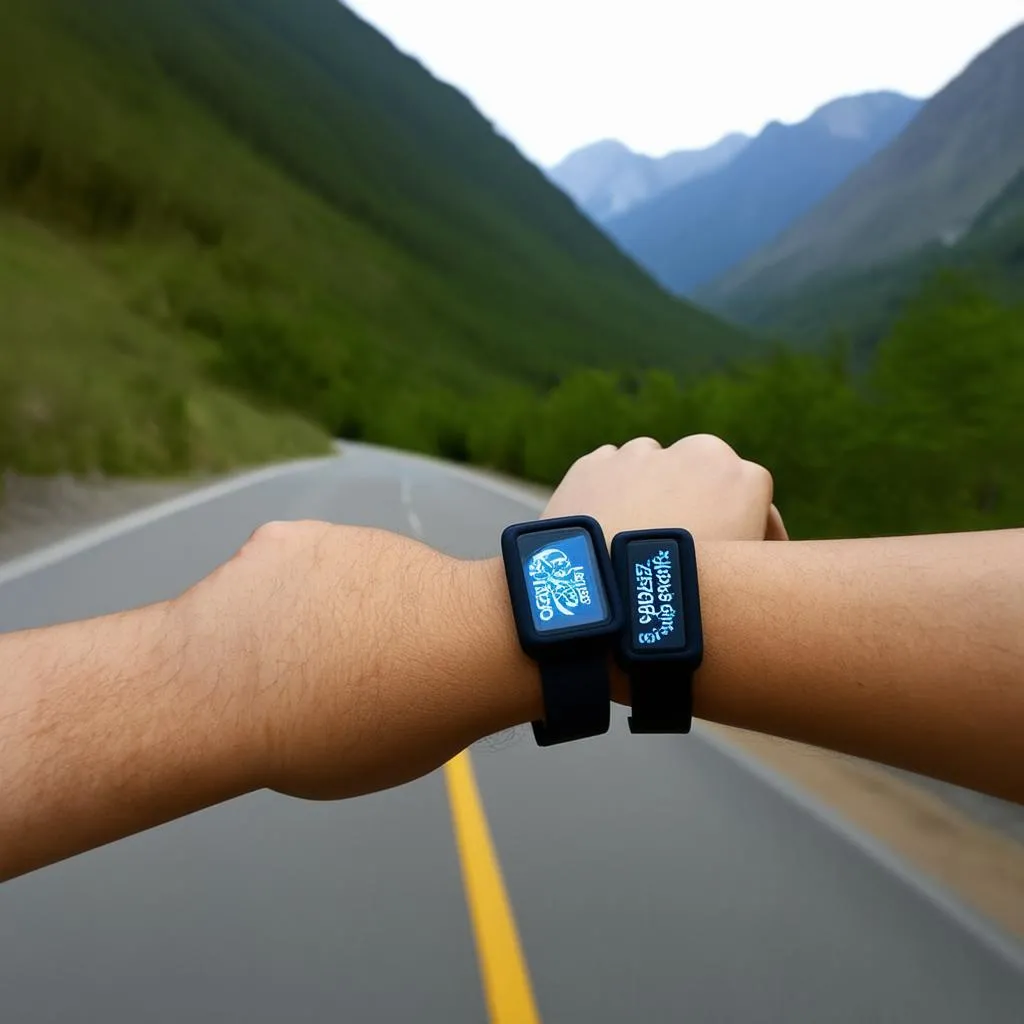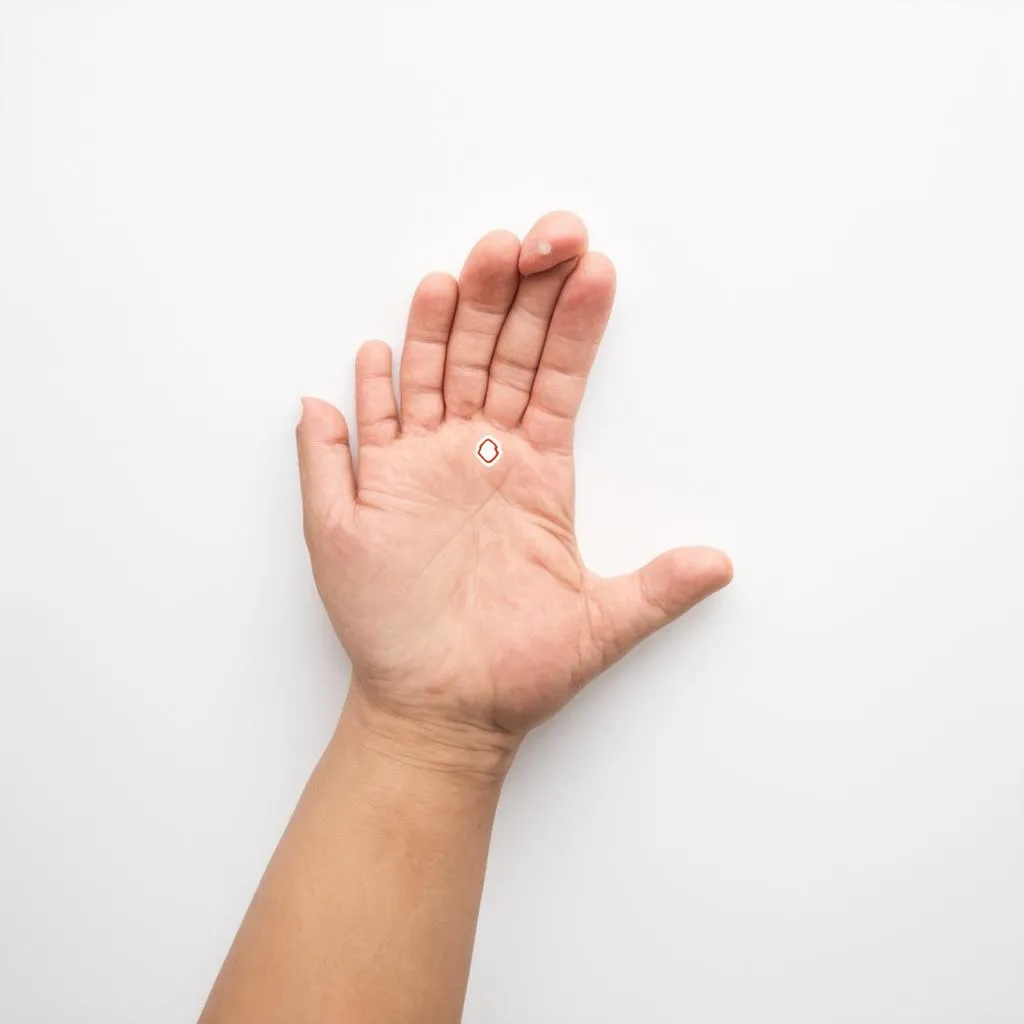Remember that time you were so excited for a road trip through the Scottish Highlands, only to be met with waves of nausea as soon as the car started winding its way along Loch Ness? We’ve all been there. Thankfully, travel sickness bands offer a beacon of hope. But how do these seemingly simple wristbands actually combat the dreaded feeling of motion sickness? Let’s dive in and unravel the mystery.
Understanding Travel Sickness: A Battle of the Senses
Before we explore the world of travel sickness bands, let’s understand the root of the problem. Motion sickness, whether experienced in a car, on a boat, or during a turbulent flight, arises from a sensory conflict within our bodies. Imagine you’re on a swaying ship; your inner ear senses the motion, but your eyes, focused on a stationary point, tell your brain you’re still. This mismatch sends a confusing message to your brain, often resulting in dizziness, nausea, and even vomiting.
Decoding the Magic of Travel Sickness Bands
Travel sickness bands, also known as acupressure bands, work on the principle of acupressure, a traditional Chinese medicine technique. These bands typically feature a small plastic button that applies pressure to the P6 pressure point, also known as the Neiguan point, located on the inner wrist, three finger widths below the palm.
How Pressure Points Alleviate Nausea: A Scientific Perspective
While the exact science behind acupressure remains partially understood, research suggests that stimulating the P6 point might:
- Interrupt Nausea Signals: Applying pressure on the P6 point potentially disrupts the transmission of nausea signals from the brain to the stomach, providing relief.
- Release Endorphins: Acupressure might stimulate the release of endorphins, our body’s natural pain relievers, offering a sense of calm and reducing the feeling of nausea.
Some studies, like one published in the Journal of Alternative and Complementary Medicine, have shown the effectiveness of P6 stimulation in reducing nausea and vomiting. However, more research is needed to understand its full potential.
Choosing the Right Travel Sickness Band: A Guide
Travel sickness bands come in various shapes and sizes, from simple fabric bands with buttons to more adjustable options. When choosing a band, consider:
- Comfort and Fit: Opt for a band that fits snugly but isn’t too tight, ensuring comfortable wear throughout your journey.
- Material: Breathable materials like cotton or neoprene can prevent sweating and discomfort during prolonged use.
- Durability: Choose a band made from durable materials to withstand repeated use.
Tips for Using Travel Sickness Bands Effectively
- Wear it Right: Place the band on your wrist before your journey begins, ensuring the button exerts gentle pressure on the P6 point.
- Bilateral Application: For enhanced effectiveness, wear a band on both wrists.
- Combine with Other Remedies: Consider using travel sickness bands in conjunction with other remedies like ginger candies or deep breathing exercises for optimal results.
Debunking Myths and Addressing Concerns
Are travel sickness bands just a placebo effect?
While the placebo effect might play a role, numerous studies and anecdotal evidence suggest that travel sickness bands can provide genuine relief, particularly for mild to moderate cases of motion sickness.
Are there any side effects?
Travel sickness bands are generally considered safe for most individuals. However, some people might experience mild skin irritation or discomfort at the pressure point.
Beyond the Bands: Exploring Other Travel Sickness Remedies
While travel sickness bands can be highly effective, exploring other remedies for a holistic approach is always a good idea.
- Ginger: This natural wonder, whether consumed as candies, tea, or supplements, has long been revered for its anti-nausea properties.
- Peppermint: The refreshing aroma of peppermint can help calm the stomach and reduce nausea.
- Deep Breathing Exercises: Practicing deep, slow breaths can help regulate breathing patterns and alleviate feelings of nausea.
Travelcar.edu.vn: Your Compass for Smooth Sailing
Navigating the world of travel sickness can feel overwhelming, but remember, you’re not alone! At Travelcar.edu.vn, we’re committed to providing you with the information and resources you need to embark on comfortable and enjoyable journeys.
For more tips on combating travel sickness and exploring the world with ease, check out our articles on:
Remember, the world is your oyster, and with the right tools and knowledge, you can explore it without letting motion sickness hold you back!
Frequently Asked Questions About Travel Sickness Bands
Q: Can I use travel sickness bands for children?
A: Yes, travel sickness bands are available for children and can be a safe and effective way to manage motion sickness in kids. However, ensure you choose a band specifically designed for children and consult with a pediatrician if you have any concerns.
Q: Can I wear travel sickness bands while pregnant?
A: While generally considered safe, it’s best to consult with your healthcare provider before using travel sickness bands during pregnancy, as they might recommend alternative remedies.
Q: How long do travel sickness bands last?
A: The lifespan of a travel sickness band depends on usage and brand. However, most bands are reusable and can last for multiple trips with proper care.
Conclusion
Travel sickness bands offer a drug-free, convenient, and often effective solution for managing motion sickness. By understanding how they work and incorporating them into your travel routine, you can embrace the joy of exploration without the fear of nausea. Remember, preparation is key, and with the right strategies, you can turn any journey into a smooth and memorable adventure.
Don’t let motion sickness keep you from experiencing the beauty of the world. Embrace the journey, and let TRAVELCAR.edu.vn be your guide!
 Travel Sickness Bands
Travel Sickness Bands
 Acupressure Point Wrist
Acupressure Point Wrist
